Nov
30
2020
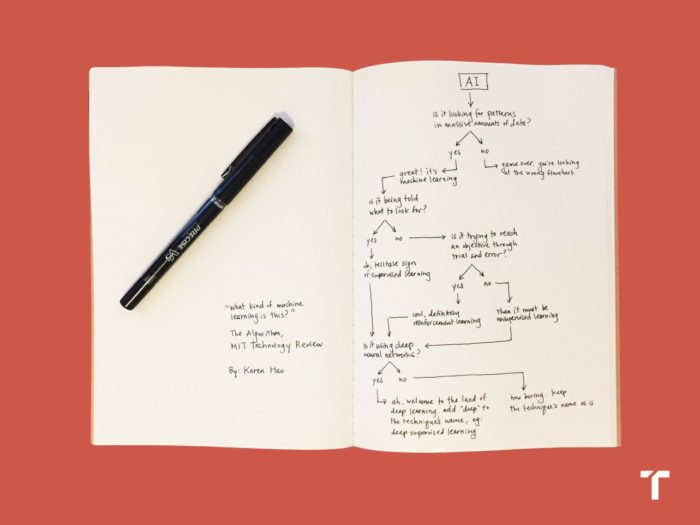 I have discussed often before how advances in artificial intelligence (AI) are already transforming our world, but are likely to do so much more in the future (even near term). I am interested in one particular application that I think does not get enough attention – using AI to support clinical decision-making. So I was happy to read that one such project will share in a grant from the UK government.
I have discussed often before how advances in artificial intelligence (AI) are already transforming our world, but are likely to do so much more in the future (even near term). I am interested in one particular application that I think does not get enough attention – using AI to support clinical decision-making. So I was happy to read that one such project will share in a grant from the UK government.
The grant of £20m will be shared among 15 UK universities working on various AI projects, but one of those projects is developing an AI doctor’s assistant. They called this the Turing Fellowship, after Alan Turing, who was one of the pioneers of machine intelligence. As the BBC reports:
The doctor’s assistant, or clinical colleague, is a project being led by Professor Aldo Faisal, of Imperial College London. It would be able to recommend medical interventions such as prescribing drugs or changing doses in a way that is understandable to decision makers, such as doctors.
This could help them make the best final decision on a course of action for a patient. This technology will use “reinforcement learning”, a form of machine learning that trains AI to make decisions.
This is great to hear, and should be among the highest priority in terms of developing such AI applications. In fact, it’s a bit disappointing that similar systems are not already in widespread use. There are several types of machine learning. At its core, machine learning involves looking for patterns in large sets of data. If the computer algorithm is being told what to look for, then that is supervised learning. If not, then it is unsupervised. If it’s using lots of trial and error, that is reinforcement learning. And if it is using deep neural networks, then it is also deep learning. In this case they are focusing on reinforcement learning, so the AI will make decisions, be given feedback, and then iterate its decision-making algorithm with each piece of data.
Continue Reading »
Nov
24
2020
 Two weeks ago Pfizer and German company BioNTech announced preliminary analysis of their phase 3 trial of an mRNA-based vaccine for SARS-CoV-2 showing it is 90% effective (later updated to 95%). One week ago Moderna announced that they too had promising results from their phase 3 trial, also an mRNA vaccine showing 95% efficacy. This week AstraZeneca announced they have developed a COVID vaccine as well (in partnership with Oxford University).
Two weeks ago Pfizer and German company BioNTech announced preliminary analysis of their phase 3 trial of an mRNA-based vaccine for SARS-CoV-2 showing it is 90% effective (later updated to 95%). One week ago Moderna announced that they too had promising results from their phase 3 trial, also an mRNA vaccine showing 95% efficacy. This week AstraZeneca announced they have developed a COVID vaccine as well (in partnership with Oxford University).
I have not discussed the AstraZeneca vaccine before, so here are the basic facts: “It uses a replication-deficient chimpanzee viral vector based on a weakened version of a common cold virus (adenovirus) that causes infections in chimpanzees and contains the genetic material of the SARS-CoV-2 virus spike protein.” In the study, overall there was a 70% efficacy in reducing symptomatic cases of COVID-19. However, in a subgroup analysis, those receiving a half dose followed by a full dose (instead of two full doses) had 90% efficacy, which is closer to the two mRNA vaccines. It is too early to say if this difference is real, and it does not make biological sense, so the company plans to expand the number of subjects getting this dosing regimen to see if the higher efficacy holds up. One advantage to this vaccine is that it can be stored in a regular refrigerator for up to 6 months, while the mRNA vaccines have to be frozen for transport (the Pfizer vaccine at -70 degrees C, the Moderna vaccine at -20).
All three vaccines have a good safety profile so far, but it always takes time to monitor for side effects so this is an ongoing assessment. Pfizer and Moderna say they can produce over a billion doses by the end of 2021, and AstraZeneca says they can produce 3 billion doses. That is enough for about a third of the world’s population. Of course, there are many other vaccines being developed around the world so these won’t be the only three.
Continue Reading »
Nov
23
2020
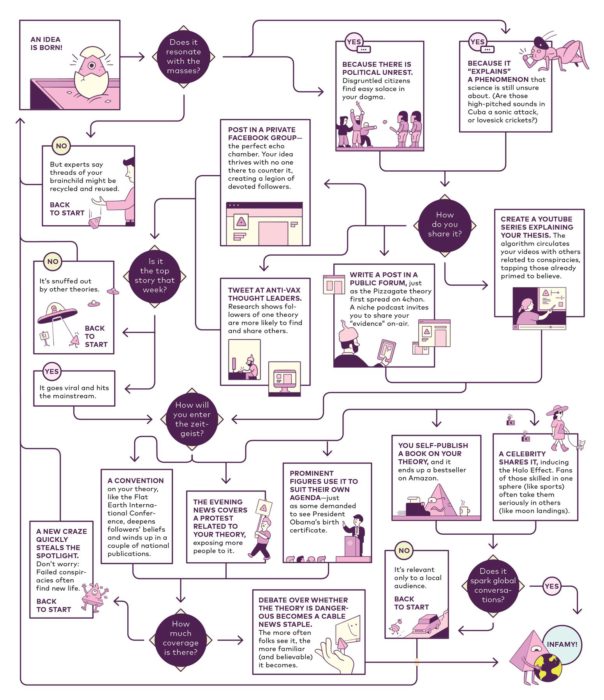 In 2019 PopSci published a flow chart they called “How to Start a Conspiracy Theory.” It’s not really about conspiracy theories themselves, but rather how to popularize an extreme idea. Many extreme claims are conspiracy theories, or at least incorporate conspiracy thinking as a way to justify themselves, so there is a lot of overlap.
In 2019 PopSci published a flow chart they called “How to Start a Conspiracy Theory.” It’s not really about conspiracy theories themselves, but rather how to popularize an extreme idea. Many extreme claims are conspiracy theories, or at least incorporate conspiracy thinking as a way to justify themselves, so there is a lot of overlap.
What the chart really reflects is how to use social media and other outlets to weaponize disinformation. Let’s take a look at what I think are the main features, and then we can see how they apply specifically to conspiracy theories. The process starts by coming up with an idea that “resonates” with the public. This is probably the hard part as there are lots of ideas out there, and it is difficult to just invent something that will go viral. This is more like winning the lottery than an engineered result. But essentially the flow chart reflects an iterative process by which you keep tweaking the idea until it takes off.
If your goal is to manufacture viral misinformation, there are a few ways to almost guarantee this will work. The first is to already be plugged into a major information outlet, like a news network, a political party, or a celebrity. This is no guarantee, but it magnifies the chances of success by orders of magnitude over just being a member of the general public. This can also work indirectly if you have the resources to push your idea through those outlets (such as lots of money, or the resources of a country).
You can also crowd-source the iterative process. This is essentially what happens when there is an existing information ecosystem surrounding an ideology. For example, anti-vaxxers are already well established enough to have their own social media ecosystem, and they can collectively iterate ideas in their internal incubator, and then push those that seem to work best. Extreme political ecosystems work the same way, pushing all kinds of crazy ideas internally with their loyal base, and then trying to export them to the mainstream media. Occasionally an idea will hit.
Continue Reading »
Nov
20
2020
 It is a useful exercise to think about the way millions or even billions of people behave to look for low-hanging fruit in terms of increased energy efficiency or environmental sustainability. While this should be a purely evidence-based and cost vs benefit exercise, it has unfortunately been sucked into the ever-growing culture war (at least in the US). Plastic straws are a great example of this. We use them mostly by habit and culture. They are often given, for example, by default in restaurants. As a result an estimated 8.3 billion plastic straws pollute the beaches of the world. Most people don’t need or even want straws, so it is a simple change to make them on-demand, rather than automatic. Further, paper straw technology is sufficient to replace them with a more biodegradable option. We can argue about the best way to achieve the goal of limiting plastic straw waste, and whether outright bans are necessary, but the plastic straw has now become an icon on the right about overreach on the left. Ugh.
It is a useful exercise to think about the way millions or even billions of people behave to look for low-hanging fruit in terms of increased energy efficiency or environmental sustainability. While this should be a purely evidence-based and cost vs benefit exercise, it has unfortunately been sucked into the ever-growing culture war (at least in the US). Plastic straws are a great example of this. We use them mostly by habit and culture. They are often given, for example, by default in restaurants. As a result an estimated 8.3 billion plastic straws pollute the beaches of the world. Most people don’t need or even want straws, so it is a simple change to make them on-demand, rather than automatic. Further, paper straw technology is sufficient to replace them with a more biodegradable option. We can argue about the best way to achieve the goal of limiting plastic straw waste, and whether outright bans are necessary, but the plastic straw has now become an icon on the right about overreach on the left. Ugh.
It’s possible that e-mail may follow the path of plastic straws into a senseless culture war. According to the BBC, the Financial Times reports that the UK government is considering recommending that everyone try to send fewer e-mails. Why? Climate change.
“It claimed that if every British person sent one fewer thank you email a day, it would save 16,433 tonnes of carbon a year, equivalent to tens of thousands of flights to Europe.”
That sounds like a lot of carbon, but of course it is tiny compared to total carbon output – about 0.0037% of the output of the UK economy. This illustrates a few principles worth pointing out. First, when hundreds of millions or billions of people engage even in a small behavior, the cumulative effect adds up. So shaving tiny costs (in resources, in pollution, etc.) can have a measurable effect. But obviously the effect is going to be proportional to the action. I probably look at a couple hundred e-mails per day. Not sending one “thank you” e-mail seems like a drop in the bucket – because it is. The result is that the absolute magnitude is large, because there are hundreds of millions of buckets, but the relative magnitude is small.
Continue Reading »
Nov
19
2020
 It is possible that sometime this century the first human will set foot on Mars. If this happens it is then likely that those humans that do will want to stay there for a while. It takes between 150-300 days to get to Mars with current technology (depending on launch and vehicle variables), unlike the three days it takes to get to the Moon. Perhaps before we try to get to Mars we will have nuclear thermal propulsion, and the trip time will decrease to about 90 days. So extended missions will likely be the norm, and in fact there is talk about a permanent colony on Mars. This will be a tremendous technological challenge, which is one reason I think we should do it. I also think this should be an international project.
It is possible that sometime this century the first human will set foot on Mars. If this happens it is then likely that those humans that do will want to stay there for a while. It takes between 150-300 days to get to Mars with current technology (depending on launch and vehicle variables), unlike the three days it takes to get to the Moon. Perhaps before we try to get to Mars we will have nuclear thermal propulsion, and the trip time will decrease to about 90 days. So extended missions will likely be the norm, and in fact there is talk about a permanent colony on Mars. This will be a tremendous technological challenge, which is one reason I think we should do it. I also think this should be an international project.
One of the many challenges is resources – a colony will need energy, food, water, atmosphere, and protection from radiation. Energy might be the easiest to solve – just use the nuclear engine that got you there. Food, water, and oxygen will likely be the most challenging, as Mars is far away to supply. It’s likely that we will send robotic missions to Mars to pave the way for any human crew, pre-supplying the mission with everything they need. But if the ultimate goal is a Mars colony we will need to figure out how to make it self-sustaining, and this means growing food. Plants not only provide food, they also can provide oxygen to breath. You can grow food hydroponically, but this is limiting. It would be easier to support a colony with soil.
Scientists, therefore, are very interested in how well the regolith on Mars will serve as a substrate for farming. We don’t have direct access to Mars regolith to study, but we do have information about what the regolith is like from the various landers and rovers we have sent to Mars. We can therefore simulate Mars regolith, at least to some degree, and see if we can grow plants in it. There have already been studies doing just that. A 2019 study looked at seed germination and plant growth for 10 crops in Earth control soil, NASA simulated Moon regolith, and simulated Mars regolith. They found that 9/10 of the plants (all but the spinach) germinated and grew well in the simulated regolith, although not as well as in the Earth soil. Of note, the simulated regolith in this study contained added organic material, to simulate the compost from previous crops or food.
Continue Reading »
Nov
17
2020
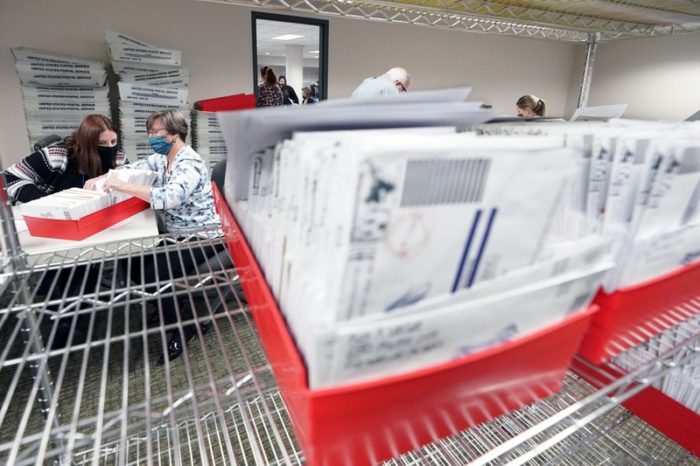 Most of us have probably had the experience, whether we remember a specific incident or not, of playing with friends when we were very young. When children first learn how to play with others one of the first lessons learned is that you follow the rules of the game. You don’t get to make up your own rules as you go along. And of course those of us who are parents will better remember seeing this behavior in our own children. There is a natural competitiveness that children have, and they don’t like losing. When they do lose, it is common for them to attempt to rescue victory from the jaws of defeat by making up new rules ad hoc – after they see the results.
Most of us have probably had the experience, whether we remember a specific incident or not, of playing with friends when we were very young. When children first learn how to play with others one of the first lessons learned is that you follow the rules of the game. You don’t get to make up your own rules as you go along. And of course those of us who are parents will better remember seeing this behavior in our own children. There is a natural competitiveness that children have, and they don’t like losing. When they do lose, it is common for them to attempt to rescue victory from the jaws of defeat by making up new rules ad hoc – after they see the results.
This is amusing when we see children do it, and it seems obvious why you can’t make up your own rules to reverse engineer the results you want. But of course, we continue this exact same behavior as adults, we simply do it with more sophistication and subtlety. Even scientists do it – when they do we often call it p-hacking, or perhaps harking (hypothesizing after the results are known). But using complex statistical analysis does not make the behavior fundamentally different than making up new rules on the elementary school playground.
Harking in science is very common. I most often see it in the form of making up explanations for why a clinical trial has failed. Perhaps the dose was too low or the treatment duration too short. Perhaps there is a subset of people in whom the treatment does work, if we just find the right parameters. Maybe we need to start treatment earlier. These are all reasonable hypotheses, and may be true in some cases, but raising them after a treatment has failed, and for no other reason than the fact that the results were negative, is not very predictive that any of them are true. It is simply making up excuses after the fact.
Continue Reading »
Nov
12
2020
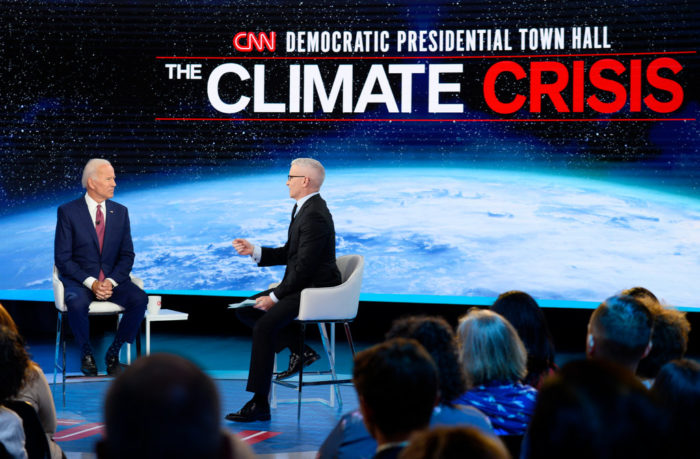 Despite Trump’s attempt to break US democracy in order to alter reality to his liking, Joe Biden will be sworn in as the next president. This has obvious implications for US’s plans for tackling climate change. The first is that we will now have an executive branch that recognizes science, that climate change is real, and will actually try to do something about it. Immediately this means rejoining the Paris accord, and appointing people to the energy and environmental agencies that are not climate change-denying coal executives.
Despite Trump’s attempt to break US democracy in order to alter reality to his liking, Joe Biden will be sworn in as the next president. This has obvious implications for US’s plans for tackling climate change. The first is that we will now have an executive branch that recognizes science, that climate change is real, and will actually try to do something about it. Immediately this means rejoining the Paris accord, and appointing people to the energy and environmental agencies that are not climate change-denying coal executives.
Biden’s plan (which is not the green dew deal) is to have our energy infractructure be net zero carbon emitting by 2035 and the entire country to be net zero by 2050. That is ambitious, and if I had to bet I would say we will fall short of this goal (although I hope I’m wrong), but it is a reasonable goal. How, theoretically, will we get there?
First, although it is politically risky to say so bluntly, we have to wean ourselves entirely off of fossil fuel. Biden acknowledged this during the second debate – end fossil fuel subsidies, and phase out fossil fuels over time. Given his stated goal, that would mean phasing out coal, oil, and gas by 2035. Is that even feasible? Currently, if we look only at power production, the mix of sources in the US is: fossil fuels 62.6%, Nuclear 19.6%, and renewables (wind, solar, biomass, geothermal, hydroelectric) 17.6%. The question is, in 2035, what do we want our energy mix to look like and how can we get there?
The path to getting there is not insignificant, because we will be emitting carbon along the way. One controversy is fracking and natural gas, which is cleaner than coal, but still a fossil fuel. Should we phase out coal quickly by replacing it with natural gas plants, or skip over natural gas and go straight to renewables and nuclear? If we could skip natural gas that would be optimal, but realistically the perfect may be the enemy of the good. Natural gas may be an effective temporary measure to quickly eliminate coal while we are transitioning to net zero energy production. But I am open on this question.
Continue Reading »
Nov
10
2020
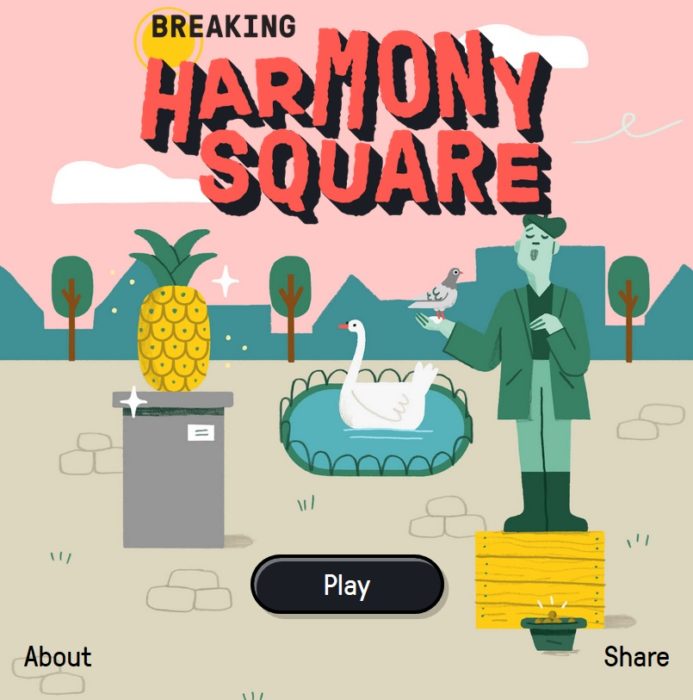 A new game called Harmony Square was released today. The game hires you, the player, as a Chief Disinformation Officer, and then walks you through a campaign to cause political chaos in this otherwise placid town. The game is based upon research showing that exposing people to the tactics of disinformation “inoculates” them against similar tactics in the real world. The study showed, among other things, that susceptibility to fake news headlines declined by 21% after playing the game. Here is the full abstract:
A new game called Harmony Square was released today. The game hires you, the player, as a Chief Disinformation Officer, and then walks you through a campaign to cause political chaos in this otherwise placid town. The game is based upon research showing that exposing people to the tactics of disinformation “inoculates” them against similar tactics in the real world. The study showed, among other things, that susceptibility to fake news headlines declined by 21% after playing the game. Here is the full abstract:
The spread of online misinformation poses serious challenges to societies worldwide. In a novel attempt to address this issue, we designed a psychological intervention in the form of an online browser game. In the game, players take on the role of a fake news producer and learn to master six documented techniques commonly used in the production of misinformation: polarisation, invoking emotions, spreading conspiracy theories, trolling people online, deflecting blame, and impersonating fake accounts. The game draws on an inoculation metaphor, where preemptively exposing, warning, and familiarising people with the strategies used in the production of fake news helps confer cognitive immunity when exposed to real misinformation. We conducted a large-scale evaluation of the game with N = 15,000 participants in a pre-post gameplay design. We provide initial evidence that people’s ability to spot and resist misinformation improves after gameplay, irrespective of education, age, political ideology, and cognitive style.
While encouraging, I think there are some caveats to the current incarnations of this approach. But first, let me say that I think the concept is solid. The best way to understand mechanisms of deception and manipulation is to learn how to do them yourself. This is similar to the old adage – you can’t con a con artist. I think “can’t” is a little strong, but the idea is that someone familiar with con artist techniques is more likely to spot them in others. Along similar lines, there is a strong tradition of skepticism among professional magicians. They know how to deceive, and will spot others using similar deceptive techniques. (The famous rivalry between James Randi and Uri Geller is a good example of this.)
Continue Reading »
Nov
09
2020
 The story of the conflict between Galileo Galilei and the Catholic Church is a classic one, often cited as primary evidence for the historical conflict between science and religion. In 1992, after 359 years, the Church finally admitted that Galileo was right. Here is a quick summary of the affair in the New Scientist:
The story of the conflict between Galileo Galilei and the Catholic Church is a classic one, often cited as primary evidence for the historical conflict between science and religion. In 1992, after 359 years, the Church finally admitted that Galileo was right. Here is a quick summary of the affair in the New Scientist:
In 1633, the Inquisition of the Roman Catholic Church forced Galileo Galilei, one of the founders of modern science, to recant his theory that the Earth moves around the Sun. Under threat of torture, Galileo – seen facing his inquisitors – recanted. But as he left the courtroom, he is said to have muttered, ‘all the same, it moves’.
This is the Hollywood version of history. Galileo never muttered the famous line, “all the same, it moves” or any version of it (at least there is no record of such a statement, and how could there be?). It is also not accurate to say that Galileo recanted under threat of torture. But – the core of the story, it turns out, is true. Here is the short version from Creation.com:
The reality, however, is quite different. At the time of Galileo’s trial, the scientific evidence did not support his assertion that the earth moves, and his ‘proof’ that it did was based on a flawed argument. It was only many years later that scientists were able to confirm that he was right. Galileo was foolish and arrogant in the way he argued his case; he made enemies unnecessarily and threatened the establishment’s hold on the education system. Even at the time, many considered that he was the victim of politics rather than attempts to safeguard Christian doctrine.
This version of events is completely false. This is the equivalent of saying that the American civil war was not really about slavery. Fortunately, the trial of Galileo is a well-documented event. This is one advantage of having an institution that survives for centuries – they can keep accurate records. We actually have transcripts and reports from the trial itself, and letters written by the key players, including Galileo. Galileo was already famous at the time, and there was great interest in the trial. The Church itself wanted the results of the trial to be widely known – that was kinda the idea.
Here is a great summary by Richard Blackwell who walks the reader through the trial and cites the key documents to support his narrative. The documents really leave zero doubt as to the big picture. Of course, there is always more complexity. I’m sure there was a lot of politics and backroom dealing going on that did not get documented, but nothing could change the broad brushstrokes of what happened. I will give a much briefer summary, but if you are interested in all the details read Blackwell’s article. It is interesting reading and not that long.
Continue Reading »
Nov
06
2020
This is a really interesting study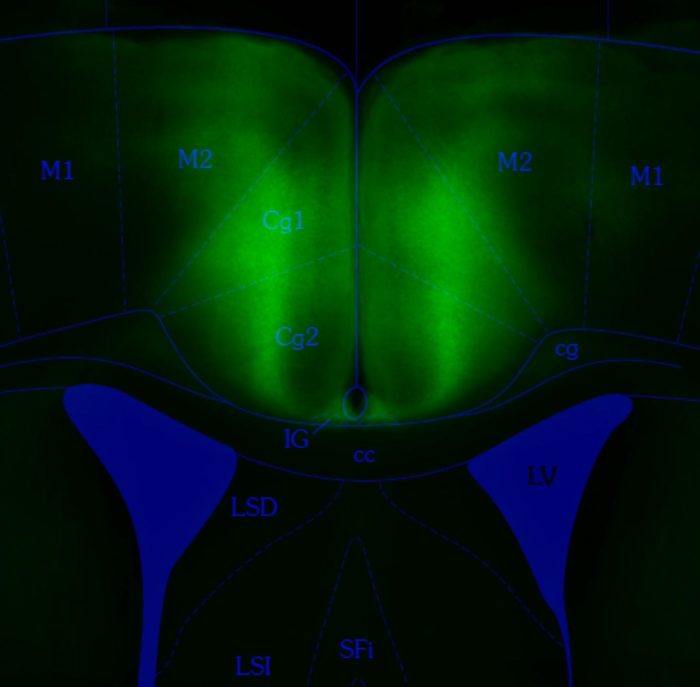 trying to work out one of the brain regions involved in decision-making. The researchers are studying mice, and using a technique know as calcium imaging and optogenetics to view the activity of brain cells in a living animal in real time. The short version is that a brain region known as the anterior cingulate cortex (ACC) is necessary for model-based decision making. But let’s back up a bit and talk about decision making.
trying to work out one of the brain regions involved in decision-making. The researchers are studying mice, and using a technique know as calcium imaging and optogenetics to view the activity of brain cells in a living animal in real time. The short version is that a brain region known as the anterior cingulate cortex (ACC) is necessary for model-based decision making. But let’s back up a bit and talk about decision making.
There appears to be two basic ways that vertebrates make decisions – model-based decision making and model-free decision making. The former involves creating an internal model of what is likely to happen in the world as a consequence of our specific actions. This approach also updates that model based upon experience. For example you may have a mental model of what is likely to happen if you slap people without provocation. If you ever decided to actually slap someone, their reaction would be used to update your model and inform future model-based decisions.
Model-based decision making is very effective, as it can take into consideration many variables and constantly updates itself with real-world experience. But this approach is also very labor-intensive. One of the basic principles of neuroscience is that brains are lazy, meaning that they tend to choose the pathway of least energy expenditure to get to a desired outcome. What this means on a neurological level is that the brain is generally wired with mechanisms to reduce energy expenditure, by which I mean thinking. As we learn, pathways form that make actions, thoughts, and behaviors more automatic. This often literally means laying down subcortical pathways that can carry out the procedure automatically without having to engage higher cortical processing, which is very energy intensive. For example, when you drive to work, which you have done hundreds or thousands of time, you will likely be on “automatic pilot”. You don’t have to think about your route, or when to turn, you just drive there from memory. It’s so easy, your brain can engage in other tasks, to the point that you may not even remember the drive.
Continue Reading »
 I have discussed often before how advances in artificial intelligence (AI) are already transforming our world, but are likely to do so much more in the future (even near term). I am interested in one particular application that I think does not get enough attention – using AI to support clinical decision-making. So I was happy to read that one such project will share in a grant from the UK government.
I have discussed often before how advances in artificial intelligence (AI) are already transforming our world, but are likely to do so much more in the future (even near term). I am interested in one particular application that I think does not get enough attention – using AI to support clinical decision-making. So I was happy to read that one such project will share in a grant from the UK government.
 Two weeks ago
Two weeks ago  In 2019 PopSci published a flow chart they called “
In 2019 PopSci published a flow chart they called “ It is a useful exercise to think about the way millions or even billions of people behave to look for low-hanging fruit in terms of increased energy efficiency or environmental sustainability. While this should be a purely evidence-based and cost vs benefit exercise, it has unfortunately been sucked into the ever-growing culture war (at least in the US). Plastic straws are a great example of this. We use them mostly by habit and culture. They are often given, for example, by default in restaurants. As a result an estimated
It is a useful exercise to think about the way millions or even billions of people behave to look for low-hanging fruit in terms of increased energy efficiency or environmental sustainability. While this should be a purely evidence-based and cost vs benefit exercise, it has unfortunately been sucked into the ever-growing culture war (at least in the US). Plastic straws are a great example of this. We use them mostly by habit and culture. They are often given, for example, by default in restaurants. As a result an estimated  It is possible that sometime this century the first human will set foot on Mars. If this happens it is then likely that those humans that do will want to stay there for a while. It takes between
It is possible that sometime this century the first human will set foot on Mars. If this happens it is then likely that those humans that do will want to stay there for a while. It takes between  Most of us have probably had the experience, whether we remember a specific incident or not, of playing with friends when we were very young. When children first learn how to play with others one of the first lessons learned is that you follow the rules of the game. You don’t get to make up your own rules as you go along. And of course those of us who are parents will better remember seeing this behavior in our own children. There is a natural competitiveness that children have, and they don’t like losing. When they do lose, it is common for them to attempt to rescue victory from the jaws of defeat by making up new rules ad hoc – after they see the results.
Most of us have probably had the experience, whether we remember a specific incident or not, of playing with friends when we were very young. When children first learn how to play with others one of the first lessons learned is that you follow the rules of the game. You don’t get to make up your own rules as you go along. And of course those of us who are parents will better remember seeing this behavior in our own children. There is a natural competitiveness that children have, and they don’t like losing. When they do lose, it is common for them to attempt to rescue victory from the jaws of defeat by making up new rules ad hoc – after they see the results. Despite Trump’s attempt to break US democracy in order to alter reality to his liking, Joe Biden will be sworn in as the next president. This has obvious implications for US’s plans for tackling climate change. The first is that we will now have an executive branch that recognizes science, that climate change is real, and will actually try to do something about it. Immediately this means rejoining the Paris accord, and appointing people to the energy and environmental agencies that are not climate change-denying coal executives.
Despite Trump’s attempt to break US democracy in order to alter reality to his liking, Joe Biden will be sworn in as the next president. This has obvious implications for US’s plans for tackling climate change. The first is that we will now have an executive branch that recognizes science, that climate change is real, and will actually try to do something about it. Immediately this means rejoining the Paris accord, and appointing people to the energy and environmental agencies that are not climate change-denying coal executives. A new game called
A new game called  The story of the conflict between Galileo Galilei and the Catholic Church is a classic one, often cited as primary evidence for the historical conflict between science and religion. In 1992, after 359 years, the Church finally admitted that Galileo was right.
The story of the conflict between Galileo Galilei and the Catholic Church is a classic one, often cited as primary evidence for the historical conflict between science and religion. In 1992, after 359 years, the Church finally admitted that Galileo was right. 





